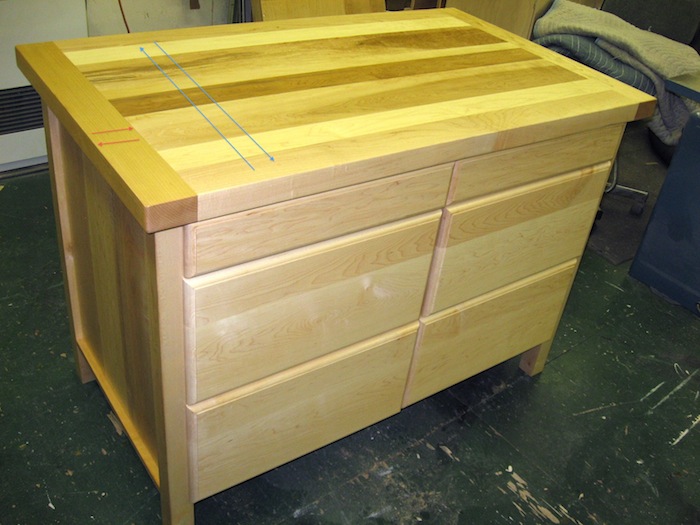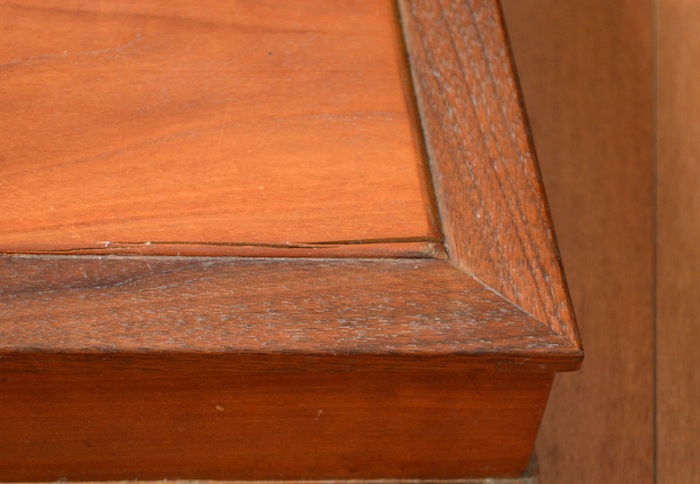Have you ever completed a perfect piece, only to see it change with the weather? I got an email the other day from someone asking why the lid warped on a box he had made. It is a common problem and it has to do with wood movement.
 Photos via wooden-box-maker.com
Photos via wooden-box-maker.com
Wood swells when it is exposed to moisture, and it shrinks when it dries. Unfortunately, buying kiln-dried wood isn’t enough. You start with drier wood, but that wood will still shrink and expand with the weather. I live in the Northeast. We have dry winters and humid summers so I see a lot of wood movement over the year. I can’t do anything about the weather, but I can make boxes with that movement in mind.
Here 3 ways to deal with wood movement.
1. Watch grain direction.
Pay attention to grain direction. Wood moves the most across the grain (radially in the drawing), and the least with the grain (tangentially).

That means a flat-sawn board will get wider and fatter, but not much longer. Keep that in mind when you are joining two pieces of wood. If you join wood across the grain, you will have movement in two directions. For example, if you have a table with breadboard ends, the main area of the table top is sometimes flush with the end boards and sometimes not. That is because the table top expands from the front to the back of the table (blue arrows) while the ends expand from side to side relative to the table (red arrows). You need to take that into account when joining the woods.

2. Leave room for movement.
Leave room for movement. If you are making a door or a box top with a panel, always leave room for the panel to expand. To do this you need to pay attention to the weather when you are making your panel. If it is the middle of summer and humid your wood will be swollen so you can make it a relatively snug fit. If you are working in the dead of dry winter months, you need to leave room for that summer humidity to swell the wood. (Here is where a moisture meter can help.)
By the same token, don’t glue wood that will need room for swelling and shrinking. This is why panels are often left “floating,” without being glued in the frame. For example, both sides of the paneled box top shown below were glued, then when the wood split when it shrunk and had nowhere to go.

3. Consider your wood.
If you want to avoid movement altogether, consider one of the man-made woods like plywood or MDF. They will still move with the humidity, but not nearly as much as solid wood. Quarter- and rift-sawn wood also tend to move less than flat sawn wood. There are differences between species as well, so it helps to know your woods. The discussion of wood movement can fill volumes (Understanding Wood by R. Bruce Hoadley is a good book if you want all the details). If you aren’t sure about your joinery, double check your grain direction and think about where you have left room for movement and where you haven’t.

Share tips, start a discussion or ask one of our experts or other students a question.
No Responses to “3 Ways to Minimize the Effects of Wood Movement”